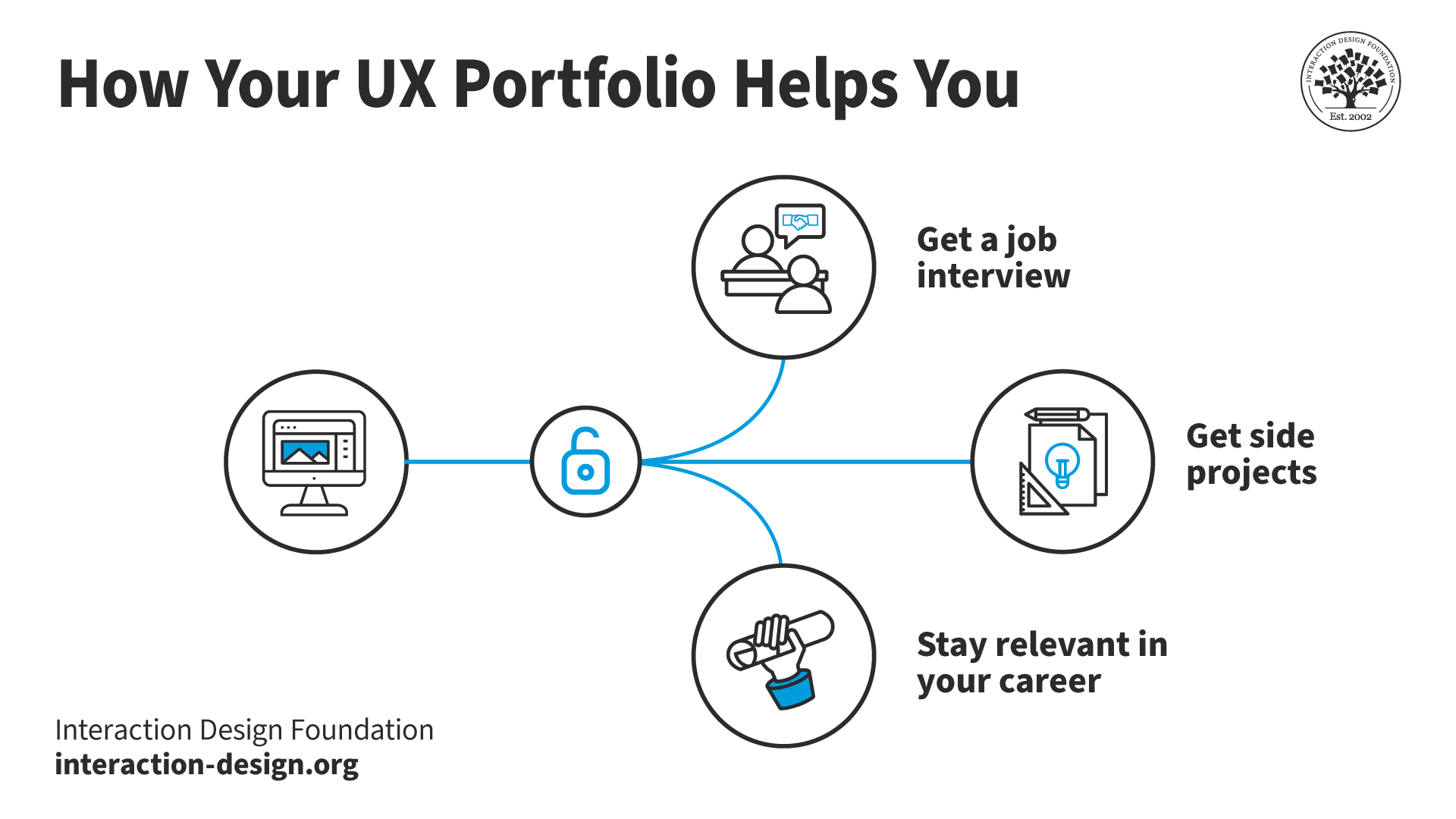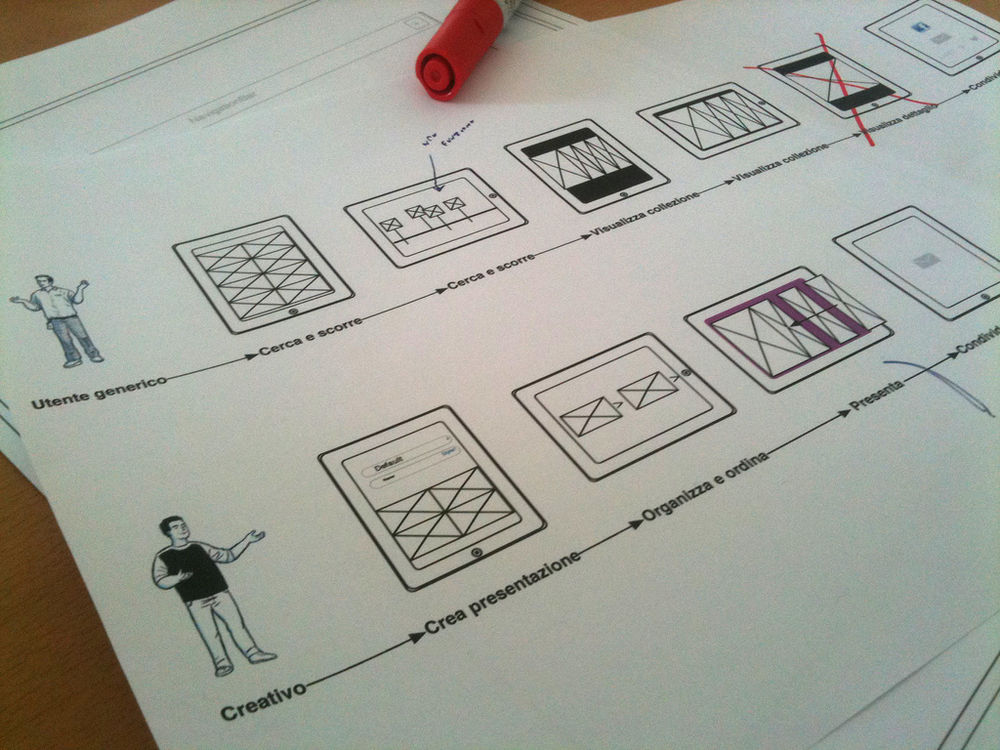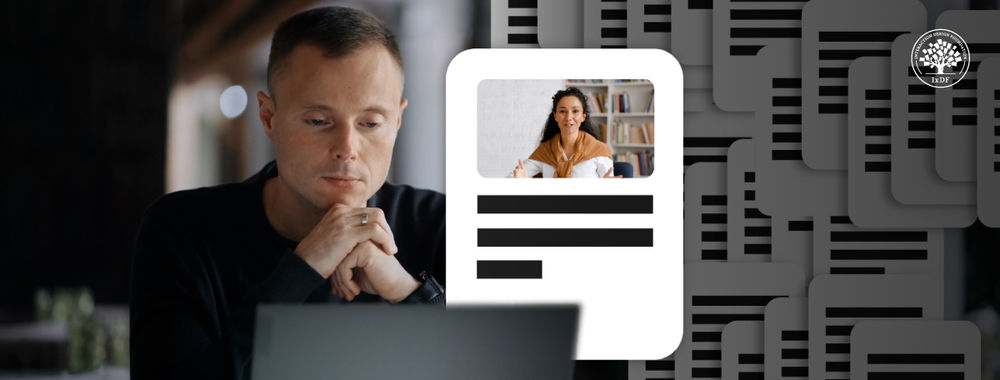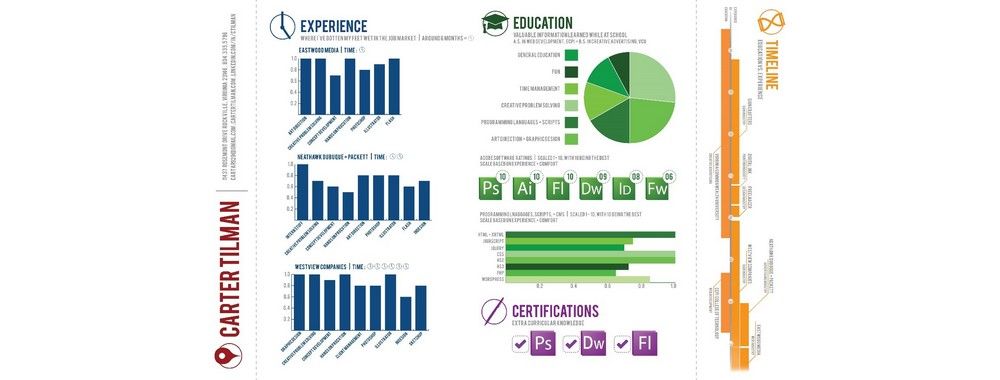Today’s world relies on technology more than ever. Think about it: we use apps to order food, websites to book travel and smart devices to control our homes—and how we interact with these technologies has become a massive part of our daily lives. And the winds of change keep blowing as yet more sophisticated products continue to emerge to keep up with tech advancements and users’ expectations. User experience (UX) design is about creating technology that’s easy and enjoyable to use—and it’s the way to get behind this “wind” and guide users as well as steer brands to heightened levels of satisfaction and success. Now’s a great chance to understand how to get into a career where you design products and services that work in user-friendly ways—in the IxDF UX Careers: Set Yourself Up for Success Master Class.
You might think UX design is an exciting career opportunity—and you're not alone. Indeed, it's a fast-growing field that’s filled with many opportunities to create digital experiences that people love and keep coming back for more. Even so, maybe you’ve got a few doubts—and perhaps they’re these:
Where do I even start?
What skills do I need?
What kind of jobs can I get?
If you're passionate about making technology easier to use, more enjoyable to experience for people and more meaningful for them too, then UX design could be your perfect career. To help you out, we'll discuss the basics of UX design and provide you with the key insights you’ll need to start your journey, and rest assured that you'll find valuable information here whether you're a complete beginner or have some design experience.
Is a Career in UX Right for You?

The answer is—it depends. You see, UX isn't just one job; it’s a whole world of different roles, with different focuses and levels of experience needed. You can find UX designers at work in almost any industry—from tech giants like Google and Apple, to startups, non-profits and government agencies; they’re pretty much everywhere.
And the potential for a career in UX is huge—and you’d not be wrong to wonder if there’s ever been a better time to flourish in this kind of career. While products and services are nothing new in general as concepts, the nuances and fineries of them in a 21st-century context certainly are. With ever-newer ways of addressing both long-existing user needs and ones that have emerged in response to more-recent developments, businesses and organizations have got to understand how important it is to create products and services that people enjoy and use more easily whatever their situation. What that translates to is a growing demand for skilled UX designers.
But it's not just about design skills and pleasing—or delighting—users and consumers. To be a great UX designer, you’ve got to understand the stakeholders' requirements, too; you must balance what users want with business objectives.
So, if you enjoy solving problems and want to create seamless digital experiences that resonate both with a brand’s target audience and to the tune of maximum success for the brand, then a career in UX design might be the perfect fit for you.
What Does a UX Designer Do?

Realistically speaking, UX designers wear many hats. Even so, don’t worry; things may be wide-ranging—and include how web designers focus on visual elements in interface designs—but their main goal is to create products and services that are easy and enjoyable to use. That said, they still have to understand user requirements—in depth—and it’s something that calls for a great deal of collaboration.
"UXer be strong, be wild, ask a million questions if required. Why, why and more why."
— Pavitra Sirse Tandon, UX Manager, Smartbox Group
Here's a quick peek at some of the things UX designers do:
Conduct research through interviews, surveys and observations.
Create user flows and journey maps to visualize interactions.
Sketch ideas, create wireframes and build interactive prototypes.
Work closely with developers and stakeholders, as well as with other designers.
Prioritize usability and user satisfaction throughout the design process.
This is just a snapshot of what a UX designer does. The tasks and responsibilities can vary based on the company, industry and the designer's experience level.
The Fields of User Experience
If you want to create user experiences that truly delight and soar high above mere user expectations, then the world of UX offers many avenues to explore. There are four main fields—each one with its specializations and roles you can take on. This is exceptionally good news as it means you can tailor your UX career to your interests and strengths and fine-tune a fine career.
UX Prototyper
Good content complements a good UX design. You can play around with words and make the design stand out. Watch Torrey Podmajersky (Author, Speaker and UX Writer) explain how to get into UX writing.
Each field offers a range of specializations and career paths. For example, a UX designer might specialize in visual design, interaction design or information architecture. A UX researcher, meanwhile, might focus on qualitative research, quantitative research or usability testing.
The beauty of UX is that it's a growing field—if not a blossoming one that will stay in full bloom. And, as time goes on and cutting-edge tech soon blends into everyday expectations and as people find new ways to access things that make life simpler, more delightful—not to mention less stressful—you'll always see new roles and specializations emerge and, amid them, find something new to learn and explore. Whether you're a creative problem solver, a data-driven analyst or a writer with a knack for user-friendly copy, have no fear—there's a place for you in the world of UX design.
Your Progression into a UX Design Career

Here's a roadmap to guide your first steps toward a UX design career. Understand how you can progress from someone with no or next-to-no knowledge of the industry to being skillful in the extreme.
1. Hone Your Craft (and Build a Strong Foundation)
Before you jump into the job hunt, it's crucial to understand the essence of UX design—and it’ll take a deep dive to sample, see and succeed at appreciating the rich textures and layers of the craft and become au fait with a UX design process and more. So, why not take the plunge—immerse yourself in the field and explore its principles, methodologies and best practices. Then, there’s the point about the organizations themselves to consider—namely, how they want things done. Sure, the design principles are there for the taking, but brands—with their individual idiosyncrasies, traditions and style guides, et cetera—tend to have their own “takes” on how to speak best to their target users and customers. So, it’s vital to research different companies to understand their UX approaches and what they expect from their designers and team members; some will be long-established names; others, fresh up-and-coming “disruptors”—the possibilities are immense.
The tech side is vital to cover, so be sure to build a solid foundation in UX design software and tools—and keep an eye on what’s hot and what’s not. As you’re doing that, take the time to identify your own strengths and weaknesses—and be honest with yourself. What are you naturally good at? What areas could you improve on? Which things do you like doing the most? The answers you furnish in this self-awareness exercise will help you focus your learning and development efforts—and form a stronger circle around what you need to spotlight as you proceed.
2. Create Your Portfolio
Think of your portfolio as your gallery—the one where you curate the best examples of your UX work and can be proud to showcase it as a kind of “brand ambassador” of your good name. You can—and would do well to—show your skills, experience and unique design style through your portfolio. It’s what’s going to travel ahead of you and do the talking for you in the first instance a lot of the time. Potential employers, prospective clients and others will base their all-important first impressions of you on it—and subsequent opinions, too. It’s your shop window, so be careful what you put on display in it and make sure it's a true reflection of your personality and capabilities.

The benefits of a UX portfolio.
© Interaction Design Foundation, CC BY-SA 4.0
Want another big gem of advice? It’s vital to walk potential employers through your design process—it shows your problem-solving skills and ability to iterate on ideas. Nobody wants to see just the “answers”; think back to school here if it helps—whoever decided your grade almost certainly wanted to see how you worked math problems out, for instance. If you're short on real-world experience, create mock projects to show your understanding of UX principles and how well you can apply them to real-world scenarios—the matters that will matter the most out there.
It’s impossible to overstate how your portfolio can make all the difference in how well you perform in an interview. You’ve got to write your case studies in a compelling way—one that really captivates your target audience: the ones who’ll hopefully hire you. Watch Mads Soegaard, Founder of the Interaction Design Foundation, discuss how to write great case studies for your UX design portfolio.
3. Define Your Persona: The Authentic UX Professional
In the UX world, your personal brand is just as important as your skills and experience. Be yourself, but be mindful of how you present yourself online and in person. You must practice your articulation skills. You should be able to convey your thoughts and ideas in a clear and concise manner. Pay attention to your body language and nonverbal cues, as they can speak volumes.
4. Prepare Well for the Interview
The interview is your chance to shine—as in, brightest among the competitors. So, research the company—thoroughly—and the people you'll interview with. Practice common interview questions and be ready to share your UX story where you highlight your passion, skills and experiences.
Use the interview to connect with your interviewers on a personal level. Don’t just say it; show it—it’s vital to share your passion for UX, your career goals and what excites you about the company and the role.
Skills you Need as a UX Designer
It calls for a unique blend of both soft and hard skills to become a successful UX designer—and a standout candidate. Yes, you need technical abilities to create functional designs, but you require—and they’ll expect—soft skills to understand user needs, collaborate effectively and advocate for user-centered solutions, too. So, without further ado, here's an overview of the kind of skills you need and need to show:
Soft Skills: The Human Touch in UX Design
Empathy: This is the engine that should power any design vehicle; first and foremost, it’s absolutely essential to show you’ve well and truly got the ability to put yourself in the shoes of your users and understand their needs, motivations and pain points. And then there are the many shades of empathy you’ll need to show around that—to design for users of all abilities—and baking that in to show you care, your brand cares and everyone can benefit from the design solution. To help you create designs that really resonate, what’s the key? It’s empathy!
Communication: Much as it may seem a corporate hirer’s buzzword that gets chucked into resumes as a must-have—and sometimes only as an afterthought for those who don’t do it well—communication really is a critical ingredient. And you need strong communication skills to explain your design decisions, collect feedback and collaborate with stakeholders.
Collaboration: Maybe with the exception of the ultra-rare “brand of one”—think UI-UX designer, developer and “everything-elser”—who designs, codes, writes copy for, markets and does, indeed, everything else, UX design is a team sport. You'll need to work effectively with other designers, developers, product managers and stakeholders to bring your ideas to life and make sure everyone’s on board about the value of the design.
Problem-solving: This one may also seem a little corporate “buzzwordy”—but make no mistake, it’s crucial to not just mention but show—and prove—to potential hirers. After all, UX design is all about solving problems for users. So, you'll need to be able to identify pain points, brainstorm solutions and iterate on your designs until you find the best possible outcome—aiming past just staying content with “good enough” to tweaking the most superior market entry, one that can utterly delight target users and give competitors a challenge to approach.
Hard Skills: The Technical Toolkit of UX Design
User research: You need to understand how to conduct user interviews, surveys, usability tests and other research methods to gather insights that will inform your design decisions and carry them to soaring heights.
Information architecture: One of the most fundamental aspects of UX design is how it requires you to organize information in a clear and intuitive way to create user-friendly products and services.
Wireframing and prototyping: These skills allow you to visualize your ideas and test them with users before—and, ideally, starting long before—you invest time and resources in development.
Visual design: To get more into the “design” side of the equation, a basic but solid understanding of visual design principles—such as color theory, typography and layout—can help you create aesthetically pleasing and effective designs. Just remember, design and art are different and the lifeblood of UX design courses through clean, lean and insightfully made visuals.
The specific skills you need are going to vary based on your role and the industry you work in. Regardless of your specialization, what you’ve read above are essential ingredients in the make-up of good designers. You’ll need to develop a strong foundation in soft and hard skills that will set you up for success as a UX designer and empower you to impress as you progress.
How Do You Progress in Your UX Career?

Your UX journey doesn't end with your first job—it may well be just the first leg of a long and productive trek. And, as you gain experience and expertise, your career can take many paths. You might lead design teams, mentor junior designers and even shape the strategic direction of a company's products—it’s all there, waiting, if you’ve got the drive to go places like these.
For instance, you might well start as a junior designer in a typical UX career path. Then, as you progress, you could become a lead designer—where you oversee projects and mentor your team. From there, you might move into management as a people manager or a staff designer—if you want, perhaps taking an online course.
But it doesn't stop there. Senior managers, heads of UX, UX directors and even CXOs (Chief Experience Officers) all play crucial roles in shaping a company's user experience—it really is a team effort, which is where you can slot in at pretty much any level you desire.
The path you choose will depend on your interests, skills and ambitions—but remember, there's no one-size-fits-all answer. The most important thing is to find a path that allows you to grow as a designer and make a meaningful impact on the world through your work.
The demand for good designers will grow as design is a hot topic. Watch Don Norman (Researcher, Professor and Author) discuss how you can progress in your career in design.
The Future of UX Design
The future of UX design is full of possibilities. As technology advances, so does the way we interact with it. This creates new challenges and opportunities for UX designers. Artificial intelligence (AI), machine learning (ML), augmented reality (AR), virtual reality (VR) and voice user interfaces (VUI) are just a few of the technologies that hold the power to bring new opportunities in UX design.
The Take Away
A career in UX design is an opportunity to shape how people interact with technology and the world around them. The demand for skilled UX designers will grow as we see new technological advancements. It doesn't matter if you prefer the creative challenges of designing user interfaces, the analytical rigor of user research or the persuasive power of UX writing; there's a path in UX design that aligns with your passions and skills.
The IxDF UX Careers: Set Yourself Up for Success Master Class will provide deeper insights into what we discussed in this piece. This IxDF Master Class will help you determine if a career in UX design is right for you. Explore the various career paths within the field, identify your metrics for success and learn how to align your skills and ambitions with the right UX role.
This Master Class is perfect for anyone curious about a UX career, whether you're a newcomer exploring your options or an experienced professional seeking a change.
Pavitra S. Tandon—a seasoned UX manager with over 14 years of experience working with diverse clients and teams—leads this class, which will provide valuable insights and practical guidance for a career in UX. Pavitra's extensive background in integrating data, UX and design thinking techniques and her passion to mentor and volunteer makes her an ideal guide for aspiring and established UX professionals.
References and Where to Learn More
Take the IxDF UX Careers: Set Yourself Up for Success Master Class. As a member, you get 90% off on every Master Class. To become a member of IxDF, sign up here.
Read our topic definition of user experience (UX) design.
Take our course User Experience: The Beginner’s Guide.
You need to understand more about UX design if you want a career in it. Read this article to learn how to become a UX designer.
Here's a constantly updated list of in-demand UX tools.












